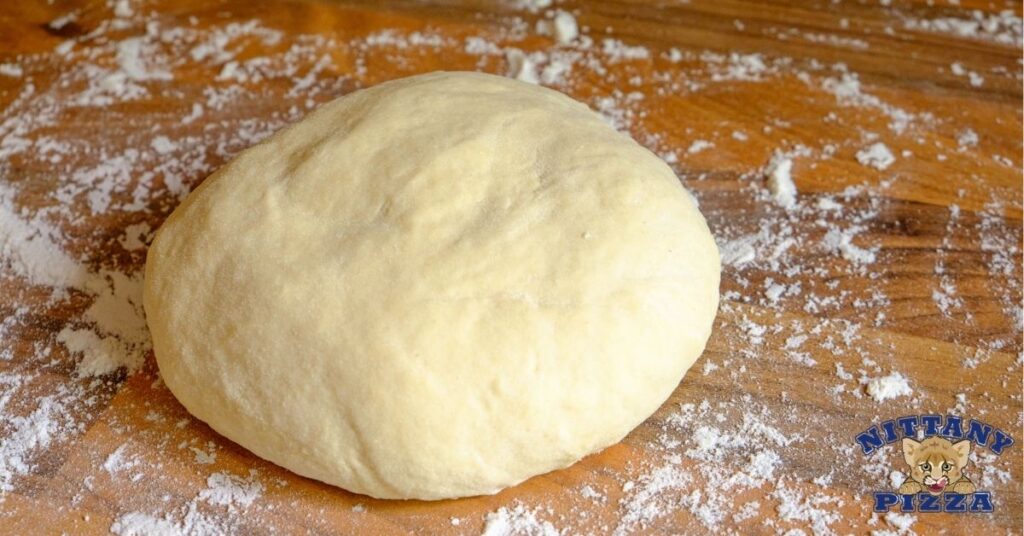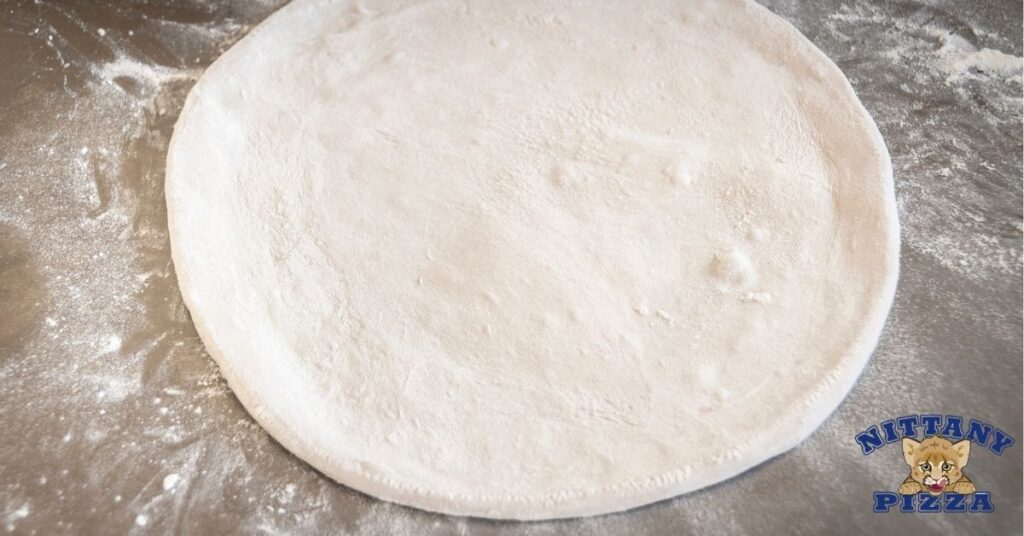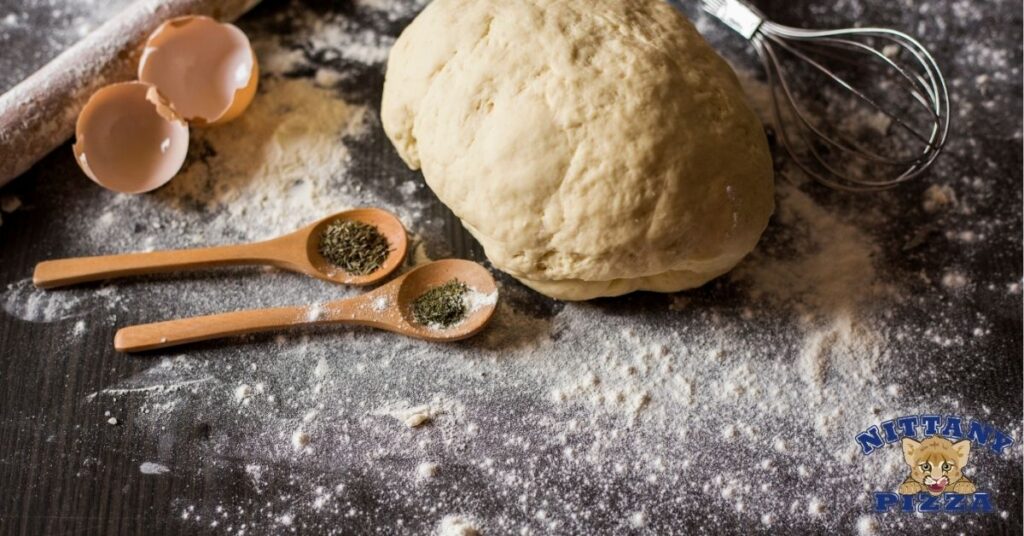Imagine biting into a pizza with a crust so flavorful and airy it feels like a masterpiece. That’s the magic of a 48-hour biga pizza dough. This isn’t just any dough—it’s a game-changer for anyone who craves authentic, pizzeria-quality pizza at home. With just a little patience, you’ll unlock a depth of flavor and texture that shortcuts simply can’t deliver.
The secret lies in the biga, a pre-fermented dough that develops rich, complex flavors over time. It’s the key to creating a crust that’s crisp on the outside, soft on the inside, and packed with subtle, tangy notes. Whether you’re a seasoned baker or a pizza enthusiast, this method will elevate your pizza nights to a whole new level. Ready to transform your homemade pizza into something unforgettable? Let’s jump into the industry of 48-hour biga dough and discover why it’s worth the wait.
What Is 48 Hour Biga Pizza Dough?

This method involves a two-day fermentation process, using biga as the foundation. Biga is an Italian pre-ferment made by mixing a small amount of yeast, water, and flour. Fermenting the biga for 24 hours develops complex flavors and enhances dough texture.
After the biga matures, it’s combined with additional ingredients to form the final dough. This step requires another 24 hours for cold fermentation to achieve optimal hydration and elasticity. The long fermentation improves the structure, resulting in a light, airy crust.
Using this process brings out a signature balance of chewiness and crispness in your pizza. The extended fermentation builds natural sweetness and depth, making it superior to standard same-day dough recipes.
Benefits Of Using A Biga In Pizza Dough

Using a biga in your pizza dough brings noticeable improvements to flavor, texture, and digestibility. This pre-ferment transforms the dough, improving the overall quality of your homemade pizza.
Enhanced Flavor And Aroma
The long fermentation process of a biga allows for complex flavor development. As the biga ferments over 24 hours, it produces natural acids and aromatic compounds. These elements create deeper, more nuanced flavors compared to standard dough. A 48-hour pizza dough made with biga also achieves a subtle sweetness and rich aroma that elevates its taste profile.
Better Texture And Crust
Biga contributes to an airy and elastic dough structure. Gluten strengthens during the fermentation period, which results in a crust that is light and easy to chew. By incorporating biga, the exterior of your pizza crust achieves a delightful crispness while the inside remains soft and tender. This textural contrast closely resembles artisan pizzeria-quality dough.
Improved Digestibility
The extended fermentation with biga breaks down complex carbohydrates in the flour. This natural process makes the dough easier to digest for many individuals. Also, the slower fermentation reduces gluten concentration, which can provide further relief for those with gluten sensitivity, though it’s not suitable for gluten-free diets.
How To Make 48 Hour Biga Pizza Dough

Crafting 48-hour biga pizza dough transforms your homemade pizza into a culinary masterpiece. This method relies on patience and precision to create dough that is rich in flavor and texture.
Ingredients You Will Need
Gathering precise quantities ensures accurate results. You’ll need these basic ingredients to prepare biga and final dough:
- Flour: 300g for biga and an additional 200g for final dough (preferably all-purpose or bread flour).
- Water: 150g for biga and 130g for final dough, measured at room temperature.
- Yeast: 2g of dry yeast, enough for the biga fermentation.
- Salt: 10g added during final dough mixing.
- Olive Oil: 15g introduced in the final dough stage for a subtle richness.
Accurate measurements are vital for fermentation and structure development.
Step By Step Preparation Process
Follow these steps to achieve optimal dough consistency and flavor.
- Prepare the Biga: Mix flour, water, and yeast in a bowl until just combined. The mixture should look shaggy and slightly sticky. Cover with plastic wrap and leave at room temperature for 18-24 hours to ferment.
- Combine Ingredients: After fermentation, mix matured biga with the additional flour, water, salt, and olive oil. Knead the mixture until it forms a cohesive, elastic dough.
- Cold Fermentation: Transfer the dough to a lightly oiled bowl, cover it, and refrigerate for 24 hours. Cold fermentation enhances flavor complexity and elasticity.
- Shape the Dough: Remove the dough from the refrigerator, divide it into portions, and let it sit at room temperature for 2 hours before stretching into pizza bases.
Completing each phase is essential to fully develop the dough’s structure.
Tips For Fermentation And Resting
Several factors influence the fermentation and resting process. Use these tips to optimize your dough:
- Temperature Control: Maintain room temperature between 68°F and 72°F during biga fermentation. Refrigeration during cold fermentation slows yeast activity while improving flavor.
- Avoid Overmixing: Gentle mixing prevents excessive gluten development, ensuring an airy dough structure.
- Rest Time: Allow 2-3 hours for the dough to reach room temperature after refrigeration for easier handling and stretching.
Precise timing and conditions refine the final texture and flavor.
Baking The Perfect Pizza With 48 Hour Biga Dough

Using 48-hour biga dough elevates your homemade pizza to artisan-quality levels. Proper preparation and baking ensure the crust achieves its signature airy texture and rich flavor.
Prepping The Dough For Baking
Allow the dough to come to room temperature before handling. Cold dough resists stretching and may not cook evenly. Dust your work surface and hands with flour to prevent sticking during shaping. Use your fingertips to gently press and stretch the dough into your desired size, avoiding rolling pins which can disrupt the air bubbles developed during fermentation. Transfer the dough to a pizza peel or baking sheet lined with parchment for easy sliding into the oven.
Ideal Cooking Methods And Tools
High heat ensures a crisp outside and chewy interior. Aim for an oven temperature of 500°F or higher. A pizza stone or steel preheated for at least 45 minutes provides an evenly heated surface, improving crust texture. If using a standard oven, position the rack at the lowest level to mimic a pizzeria oven’s heat distribution. For outdoor pizza ovens, maintain consistent flame intensity and rotate the pizza during baking for even cooking. Tools like a pizza peel, high-quality stone, and infrared thermometer simplify the process and enhance results.
Common Mistakes To Avoid
Avoid overloading your pizza with toppings. Excess weight or moisture can prevent proper crust rising and result in a soggy base. Don’t forget to preheat baking surfaces as skipping this step reduces crust crispness. Be cautious not to overhydrate the dough during mixing; excessively wet dough complicates stretching. Overproofing alters dough structure, so monitor fermentation timing carefully to maintain airiness. Finally, resist the urge to constantly open the oven door, as heat loss impacts consistency.
Conclusion
Mastering 48-hour biga pizza dough transforms your homemade pizza into a true culinary experience. With its rich flavor, airy texture, and artisan-quality crust, this method elevates your baking skills and delivers results that rival your favorite pizzeria. By dedicating time to the fermentation process and following the outlined steps, you’ll unlock a depth of flavor and texture that’s well worth the effort. Whether you’re a seasoned baker or a pizza enthusiast, this approach opens the door to creating unforgettable pizzas right in your own kitchen. Immerse and enjoy the rewards of the perfect crust.
Related Posts:
- Master the Perfect 48 Hour Biga Pizza Dough for Artisan-Quality Pizza at Home
- How Long Should Pizza Dough Rise? Expert Tips for Perfect Crust Every Time
- 5 Genius Ideas on How to Use Pizza Dough for Easy and Delicious Recipes
- How to Use Store-Bought Pizza Dough: Tips, Recipes & Mistakes to Avoid for Perfect Results
- Is Pizza Dough the Same as Bread Dough? Key Differences Every Baker Should Know
- Should Pizza Dough Be at Room Temperature? Here’s What Every Home Cook Needs to Know
- 12 Creative Ideas for What to Do with Leftover Pizza Dough (Sweet & Savory Treats!)
